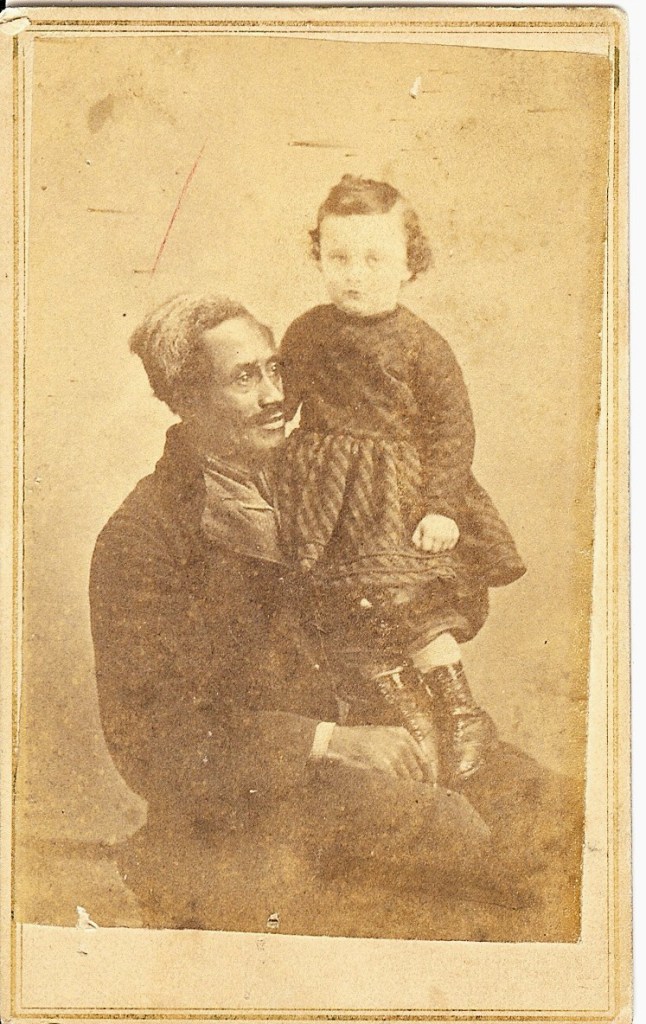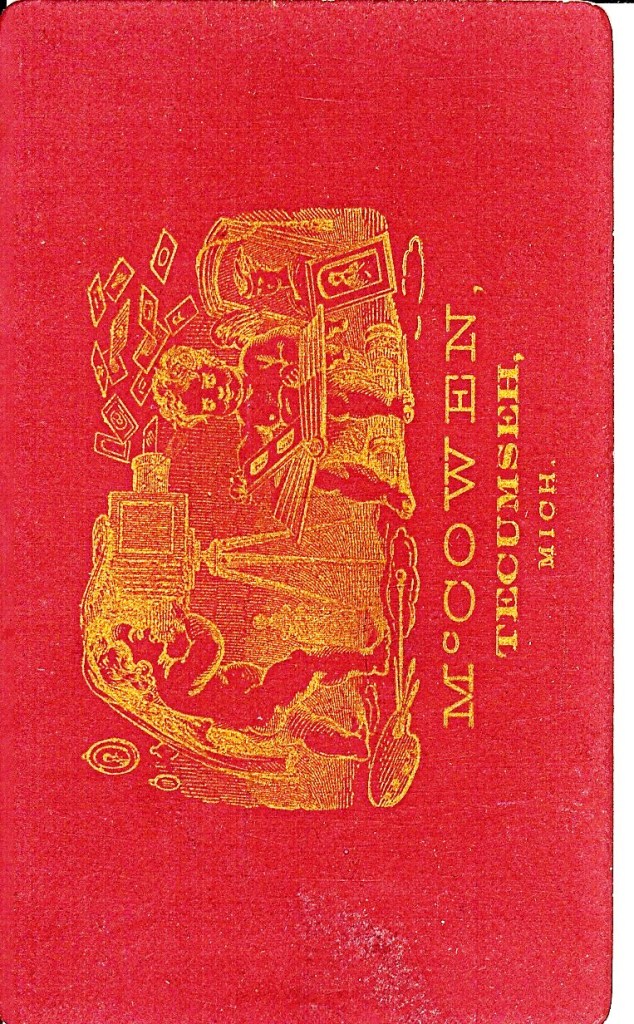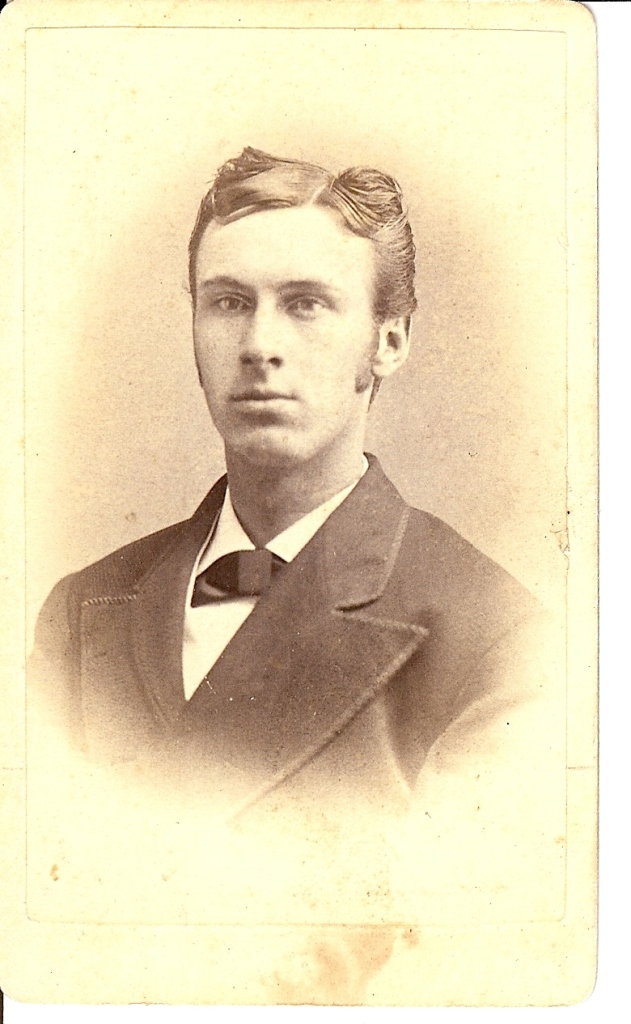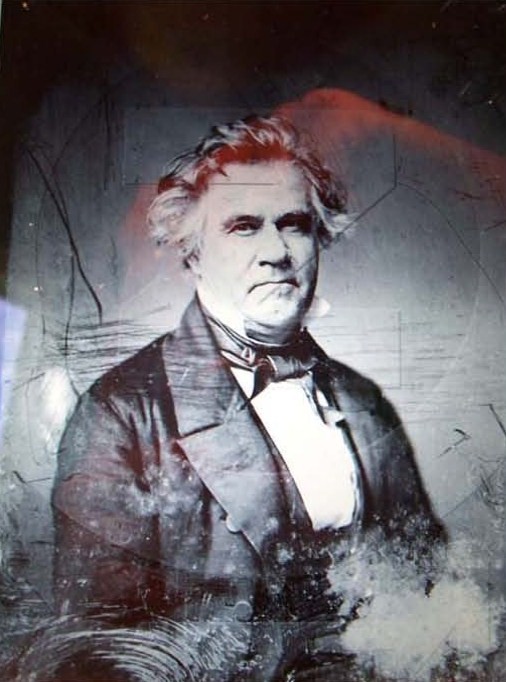Early Manchester Photographers – Part 4 of 4
by Ray Berg and Alan Dyer
In the previous three articles of this series, we have presented histories of some early Manchester photographers from 1860 – 1890, before the advent of the Kodak camera made personal photography feasible. So far, we examined the Manchester careers of Susan Speechly, Samuel Davis, Harriet Osborn, Henry Bissel and Charles M. Starks.
An interesting photo by Henry Bissel is shown in Figure 9. This portrays Addison Kief with Nelson Ockrow, a well-known black man living with his family in Manchester in the 1860s, along what is now named “Ockrow Street”.
Figure 9 – Nelson Ockrow with Addison Kief, 1867
We conclude this series by examining William McCowen, and our efforts to locate samples of the earliest forms of photography in Manchester, beginning with daguerreotypes.
William McCowen
William McCowen, born October 27, 1851 in Tecumseh, opened a gallery above Munch’s store in the Union Hall block in June 1876, thus filling the void caused by Susan Speechly’s relocation to downtown Ann Arbor. The Enterprise’s Blosser, always ready to promote new businesses in Manchester, wrote on June 8: “McCowen, of Tecumseh, called at our office last week and left a ‘colored’ photograph, something after the style of Raphael’s Cherubs, only this one represented two young ‘mokes’ all ready to go in swimming, leaning against a quarry stone. It’s worth seeing, and can be seen by calling at this office.” He also wrote: “We are pleased to announce that Will McCowen of Tecumseh, will soon open a gallery over Munch’s store in Union Hall block. Many of our citizens know Mr. McCowen to be a first-class artist, and we bespeak for him a large patronage.”
But McCowen only remained in Manchester for slightly more than a year. By the 1880 census, he was living in Custer, Nebraska, herding sheep on the ranch of Henry and Elizabeth Goodyear, prominent former Manchester residents. It is not certain how long his stay lasted, but by the time of McCowen’s death in November 1911, he was back in Tecumseh, once again working as an “artist”.
Figure 10 – Photo Believed to be George Kief, son of Lucian Kief, circa 1876, by William McCowen
Now Going Back Even Further…
The authors are attempting to find examples of daguerreotypes, ambrotypes and tintypes, the earliest forms of photography, which portray Manchester and its residents. These photographic methods were in use from 1839 through approximately 1865, and examples are often found in wooden or heavy leather cases with a glass covering, sealed around the edges with a thin engraved copper border. These early and “slow” techniques were most often used for formal portraits, and required a lengthy, “fixed-expression” pose, often resulting in serious, even glum, images. Occasionally, street scenes and buildings were photographed using these technologies.
Daguerrean photographers existed in Ann Arbor and Ypsilanti in the 1840s and 1850s, and visited smaller nearby towns to develop business. For example, we have located both street scene daguerreotypes of Ypsilanti from the 1850s, and images of businessmen who were partners with Manchester founders John Gilbert and Stephen Fargo. Our goal is to locate and identify images of early Manchester residents and village street scenes from this period. Any readers who possess such images are asked to contact the authors.
As a starting point, we have located a daguerreotype of Shepherd F. Knapp, dating from 1847. Shepherd Knapp and his wife Catherine were partners with Stephen and James Fargo in the Manchester Mill beginning in 1835. The Knapps were also part owners of much of the land that eventually became downtown Manchester, as surveyed in the 1833 plat of the Village of Manchester. Shepherd Knapp lived in New York City, and built his fortune in the leather, hides and fur business, before becoming a very wealthy banker and investor. He traveled to Detroit in the 1820s and 1830s, where he met with Stephen Fargo and John M. Mack to discuss investment and other business opportunities in several locations, including what became Manchester. John M. Mack was the original surveyor of what became Manchester Township, and first located and recorded the presence of the River Raisin rapids which eventually powered Manchester’s growth in water power industries. It is evident that Knapp also met with John Gilbert and Stephen Fargo to discuss mutual investment opportunities during the “Michigan Fever” period. While we do not know whether Knapp ever visited Manchester, he did see the potential for profit that development of the new village’s water power and surrounding land held, as discussed in our recent article on the naming of Manchester.
We’ll talk more about Shepherd Knapp and these other investors with direct connection to Manchester in future articles.
Figure 11 – Shepherd F. Knapp, 1847 –
One of the Earliest Investors in Manchester














You must be logged in to post a comment Login